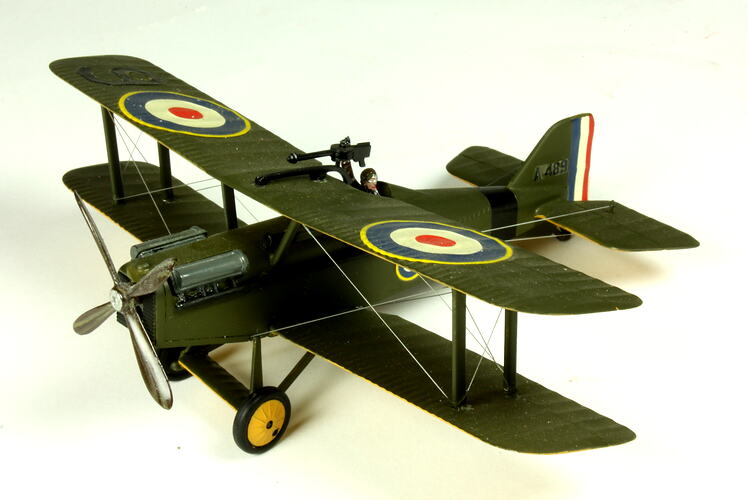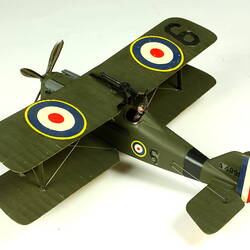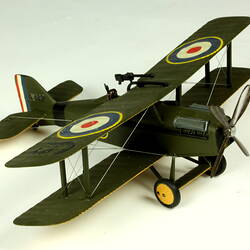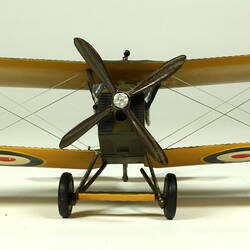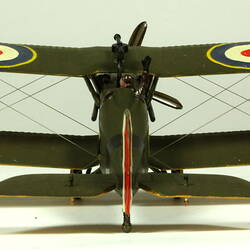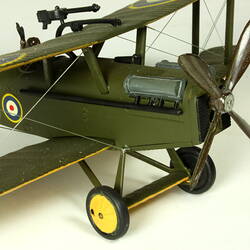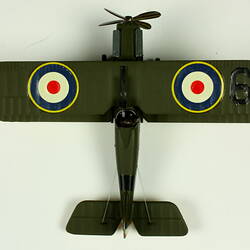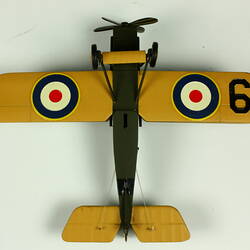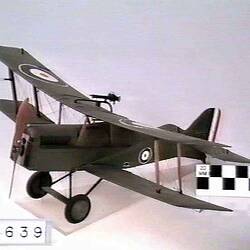Summary
Aircraft History:
The SE.5 was designed at the Royal Aircraft Factory in the UK in 1916. The improved SE.5a version entered service with Royal Flying Corps in 1917. It soon proved to be a highly effective fighting aircraft with many leading 'aces' such as 'Mick' Mannock and Albert Ball, flying the type. The in-line Wolseley Viper or Hispano Suiza engine was much easier to handle than the rotary fitted to the Sopwith Camel. No. 2 Squadron, Australian Flying Corps began using the SE.5a in France in 1917 and continued to operate the type until November 1918. It also served with No. 6 Squadron AFC for training duties in the UK. Australia received a delivery of SE.5a machines as part of the Imperial Gift of war surplus equipment from Britain. Some of these were never put into RAAF service but others were used at Point Cook, Victoria with Nos 1 and 3 Squadrons. The SE.5a was taken out of RAAF service in 1928. One example was presented to the Australian War Memorial.
Model History:
This model was donated to the Museum prior to 1993. It is finished in a First World War colour scheme to represent SE.5a serial no. A4891.
Physical Description
Dark green model airplane. Yellow underside.
More Information
-
Collecting Areas
-
Acquisition Information
Donation from Unknown Source - Likely Donation
-
Manufacturer of Item Modelled
Royal Aircraft Factory, Farnborough, England, Great Britain, 1917-1918
-
Classification
Air transport, Aircraft, Model propeller aircraft - military
-
Category
-
Discipline
-
Type of item
-
Overall Dimensions
140 mm (Length), 175 mm (Width), 63 mm (Height)
'Width' is model wingspan, 'Length' is model length from nose to tail, 'Height' is overall model height while resting on its undercarriage.
-
Model Scale
1:32
-
Keywords
Aircraft, Reconnaissance Aircraft, Military Aircraft, Model Aeroplanes, Scale Models, Wars & Conflicts, World War I, 1914-1918
